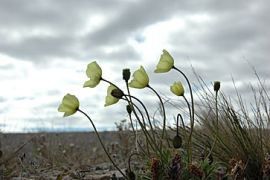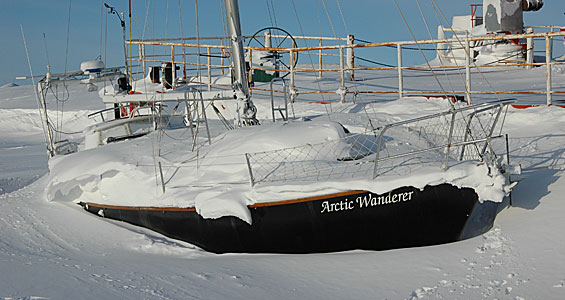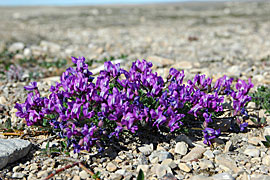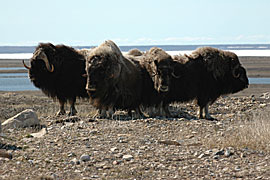Arctic route faces uncertain future
Beauty of Northwest Passage may be spoiled as ice melts at “incredible rate”.

 |
| Being trapped by ice while crossing the passage is a real danger and a boat can easily be crushed |
Peter Semotiuk first travelled the length of the Northwest Passage, a sea route through the Arctic Ocean, over 20 years ago and now helps boats to navigate safely through its waters.
During this time he has seen the ice in the passage diminish at a startling rate. Semotiuk says he is fearful for the area’s delicate ecosystem.
Keep reading
list of 4 itemsPhotos: Athens turns orange under North Africa’s Sahara dust clouds
Turtles swimming to extinction in Malaysia as male hatchlings feel heat
Could shipping containers be the answer to Ghana’s housing crisis?
Along the legendary Northwest Passage are regions that have never been explored by sailors – an irresistible temptation to those with a quest for the unknown.
| In depth |
|
|
In recent times, the number of boats attempting and successfully crossing the passage has increased significantly, where there used to be one or two – or none – per year, there are now half a dozen.
Much of the explanation for this is that the ice in the passage is diminishing at an incredible rate.
In the past, it was not unusual to have years with no open waterway at all – in a good year it might have been passable for a week at most. In the summers of both 2007 and 2008 it was open for two months.
While some areas have become less dangerous for boats, there is an increased risk in others.
Not all of the newly-opened Arctic waters have been charted and are certainly dangerous for casual travelers.
| In video |
|
|
Well-known areas are not any safer since the climate changes mean more icebergs are breaking off the Greenland glaciers and drifting into the frigid waters of Davis Strait between Baffin Bay and Greenland.
Advances in hi-tech equipment such as radar, global positioning systems, and satellite communication have helped enormously.
But it is the nature of the Arctic to create the unexpected. Vast fields of ice can move in overnight, weather can change quickly and when it does, it’s deadly.
Personal journey
I’ve lived and worked in the Arctic for many years and I was lucky enough to cross the Northwest Passage in 1988 on Belvedere, an American yacht owned by John Bockstoce.
It was his sixth year of trying and each year he had been stopped by ice.
 |
| Semotiuk first crossed the Northwest Passage in 1988 |
The trip was not only dangerous but tedious, with weeks of waiting for ice to shift, giving a series of advances and retreats until finally there was enough movement to allow us to slip through.
Because I’ve had experience of the waters and terrain, I can analyse ice charts and weather forecasts and, via marine band radio, pass information on potential ice movement to help others avoid trouble spots.
Being trapped by ice is a very real danger. A boat can easily be crushed, and rescue may be far distant.
When able I try to provide information on where one might obtain supplies, fuel, food, fresh water, and engine parts, as well as up to date weather and ice reports.
Regular contact
I have also been providing a radio net for all boats so they can talk to each other, and I am in regular contact with the Canadian Coast Guard.
Preparation is vital: several boats have been forced to spend a winter trapped in the ice.
 |
| Most visitors are enthralled by the Arctic and its landscape and environment |
Up here winter means almost a year, stretching from September until August of the following year – a long time to live with limited provisions should one choose to stay with their boat.
The trip can be easy but the Arctic is, as always, filled with treachery.
Last year one boat made an effortless crossing of the passage only to be destroyed and sunk in a storm when she reached the Alaska coast.
There are also the real-life monsters. The polar bear can be a terrifying intruder – they move swiftly and silently and are fearless about climbing on board anchored boats.
Despite the occasional dangers, most visitors are enthralled by the Arctic and its landscape, environment, and people, and most are respectful of Canadian sovereignty.
But new issues have been taking shape on the world stage.
Commercial implications
For some, the clearing ice has implications for commerce – perhaps they believe the passage can be used as an alternative to the Panama Canal shipping route or have some military advantage.
For others, the transit of the Northwest Passage is a trophy.
 |
| The Arctic is one of the last remaining wild places on earth |
The object is not to experience its unearthly and uncomfortable beauty but to race through it – a brusque and efficient conquest of one of the last remaining wild places on earth.
Will that beauty be one day destroyed? Maybe. In fact, yes, probably.
The ecosystem is fragile; wildlife is disappearing, damage is all too often permanent, even the smallest of scars take centuries to heal.
We can hope that humans will have the sense to be cautious of exploitation.
But we can’t forget that the Arctic has a way of turning on its intruders with a viciousness that can destroy both the timid and the arrogant in a heartbeat.
Nothing can be assumed or taken for granted in the Arctic.
It’s still possible that the melting of the ice cover will slow, or that the passage may again ice over and its forbidding, hostile nature will yet prevail.

 The Arctic fight for survival
The Arctic fight for survival 